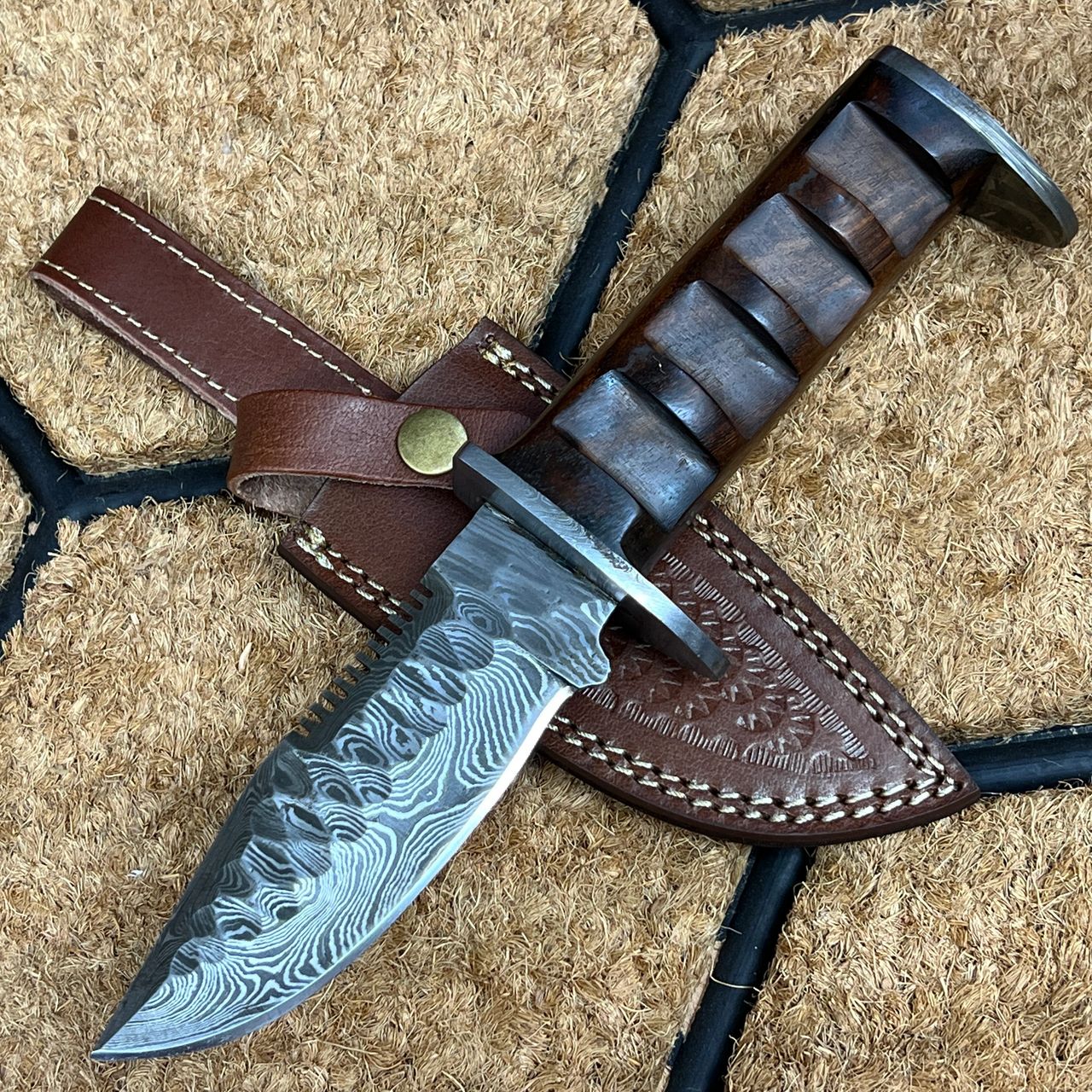Origins and History of Hunting Knives | Ash Gears
Blades used for hunting have been in use for eons. During the Stone Age, people chipped away at stones to create blades that could be used as weapons. These early blades were also crafted from animal bone or shell. Stone was used to hone each one to a razor's edge, just as it is today.
The ancient Egyptians had a wide arsenal, including knives used for hunting and skinning. The blades and grips of their knives, axes, and swords were all made of wood. This was also the earliest known use of scabbards, a type of sheath designed to protect the user's clothing while carrying a blade. Unlike modern hunters, ancient Egyptians utilized longer spears for hunting, while knives were still employed for skinning and preparing game.
By the time the ancient Greeks ruled the Mediterranean, bronze blades were commonplace in both Asia and Europe. When the Romans conquered much of the known world, steel blades began to replace their wooden predecessors. In the present day, steel is the material of choice for making knives.
Modern hunting knives are influenced by several significant innovations in knife manufacturing. For instance, following a fight with an adversary, Jim Bowie was inspired to design the now-iconic Bowie knife. After that, he made it a point to always have his hunting knife on him. He honed several blades, each of which was better suited for close quarters battle or hunting. Knives today take inspiration from the Bowie knife, with its massive fixed blade and clip point.
In the 1800s, a revolutionary improvement in hunting knives was made: the Swiss Army Knife. It eliminated the need for sheaths, effectively giving hunters a pocket-sized toolkit. Although these knives weren't originally intended for use in the field, many modern hunters rely on them for tasks like skinning game and preparing meat. As time spent in the great outdoors is a prerequisite for hunting, Swiss Army Knives are a common and useful tool.
Meat was traditionally butchered with hunting knives. They were not designed for stabbing, as they only had one sharpened edge. One edge of the blade can be curled for skinning and the other can be straight for slicing meat. While technological advancements have made modern hunting knives vastly superior to the stone blades used by early humans, knives remain an indispensable tool for many aspects of the hunting process.
When Going on a Hunt, What Type of Knife Should You Use?
Hunters can choose from a wide variety of knives designed for certain tasks. Knives will range in size and strength to suit a wide range of tasks.
Hunting knives can be used for a variety of purposes, such as:
- Gutting is a technique for preserving wildlife by removing the internal organs.
- Skinning is the process of removing an animal's skin without damaging the animal's muscles or internal organs.
- After the animal has been gutted and skinned, the meat must be deboned.
- The ability of the knife to make clean cuts through the meat is essential while butchering, which can be done in a variety of methods.
- Hunting trophies often include heads and necks that have been "capped," or skinned off.
Some of the many varieties of hunting knives are:
- A big fighting knife with a clip-point blade is known as a "Bowie."
- Preserving the animal's neck is the goal of the upturned point on the caping knife's short blade.
- For skinning, you need a knife with a short, thin, curved blade that is extremely sharp and has a comfortable, nonslip handle.
- Boning calls for a special knife with a thin, bendable blade, much like a fillet knife.
- Daggers are another common name for hunting knives. It's not a fake if it doesn't have the long, sharp blade typical of a hunting knife.
- A huge folding knife originally made for hunting, now used for general purpose cutting.
I'm in the market for a new hunting knife; what features should I seek out?
If you don't want the knife to slip out of your grasp, it should be a good fit for your hand's size and strength. Consider that your hands will likely get bloody while field dressing an animal, and that this may make it difficult to maintain a firm grip on the knife. Hunters who have a firm grasp on their weapons are less likely to suffer unintended injuries.
There are many of hunting knives out there, so you should have no trouble locating one that works for you. Ash Gears' line of Damascus Steel knives is among the best on the market.

Comments
Post a Comment